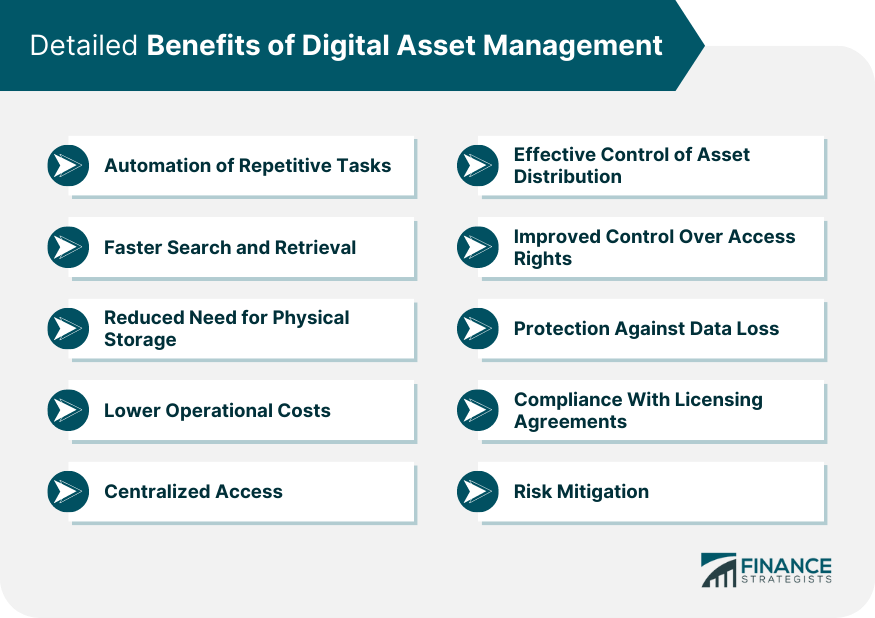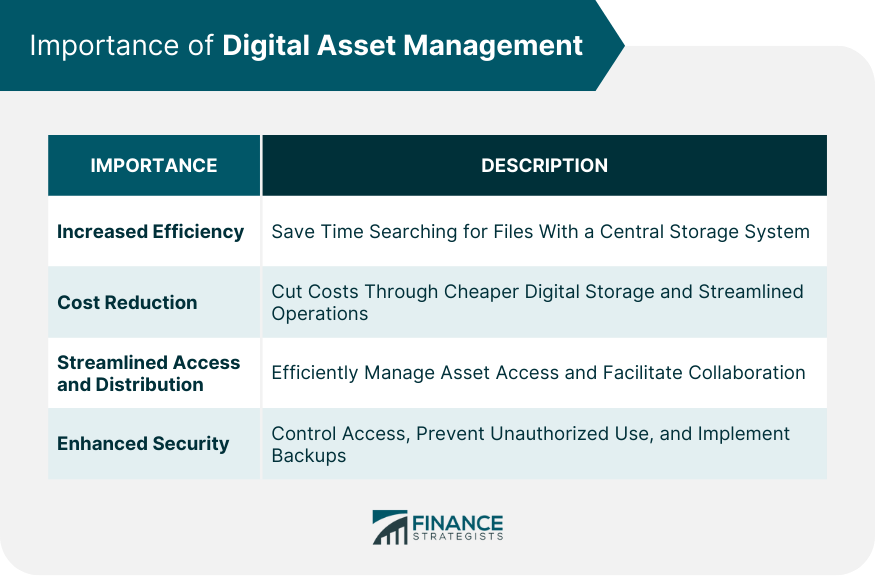Digital Asset Management (DAM) has emerged as an indispensable solution for modern enterprises to efficiently organize, store, and distribute their vast collections of digital assets. As businesses experience an unprecedented influx of multimedia content, including images, videos, audio files, documents, and more, the need for a streamlined and centralized DAM system has become paramount. This cutting-edge technology not only ensures seamless collaboration among teams but also empowers companies to maintain brand consistency and intellectual property rights. In this rapidly evolving digital landscape, a robust DAM strategy plays a pivotal role in optimizing workflows, boosting productivity, and maximizing the value of an organization's digital resources. Going beyond the general benefits, let's delve into the specific advantages of digital asset management. Many of the tasks associated with managing digital assets are repetitive and time-consuming. Digital asset management systems can automate these tasks, freeing up employees to focus on more strategic initiatives. This not only improves efficiency but also enhances job satisfaction, as employees are not bogged down with mundane tasks. Finding the right file at the right time can be like finding a needle in a haystack without the proper system. Digital asset management systems solve this problem by using metadata and keyword tagging, making it easier to search for and retrieve the right file when it's needed. With digital asset management, businesses no longer need to maintain extensive physical storage systems for their files. This not only reduces the costs associated with physical storage but also decreases the risk of loss or damage to physical files. By reducing the time spent searching for and managing digital assets, businesses can decrease their operational costs. With a digital asset management system, employees can quickly find and use the files they need, resulting in more efficient use of their time. With all files stored in a single, central location, it's easier for employees to find and access the files they need. This is especially beneficial for businesses with remote workers or multiple locations, as employees can access the files they need no matter where they are. Digital asset management systems allow businesses to control who has access to what files. This makes it easier to manage the distribution of assets, prevent unauthorized access, and track the use of assets. Digital asset management systems provide businesses with the tools to manage who has access to their digital assets. By setting access rights, businesses can prevent unauthorized access to sensitive information and keep their digital assets secure. With features such as data backup and recovery, digital asset management systems provide businesses with protection against data loss. This means that even in the event of a disaster, businesses can recover their digital assets and continue their operations with minimal disruption. Many digital assets, such as software and digital media, come with licensing agreements. Digital asset management systems can help businesses keep track of these agreements and ensure they are in compliance. By providing tools to manage access rights and protect against data loss, digital asset management systems help businesses mitigate their risk. This is especially important in today's digital age, where data breaches and cyberattacks are common occurrences. Digital Asset Management (DAM) has a critical role in various sectors, and its significance has grown as companies shift to digital landscapes. One of the primary benefits of digital asset management is that it can significantly improve a business's efficiency. By storing all digital assets in a single, central location, employees can quickly find and use the files they need, reducing the time wasted in searching for misplaced or misnamed files. By transitioning to a digital asset management system, businesses can dramatically cut their costs. Digital storage is far cheaper than physical storage, and the costs decrease even further as technology advances. Also, by reducing the amount of time employees spend on searching for and managing files, businesses can lower their operational costs. With a digital asset management system in place, businesses can efficiently manage who has access to what files. This makes it easier to control the distribution of assets, especially in large organizations with many employees. It can also improve collaboration by making it easier to share files between teams or departments. Digital asset management also offers enhanced security for digital assets. By controlling who has access to what files, businesses can reduce the risk of unauthorized access or distribution. Furthermore, many digital asset management systems include backup and recovery options, providing an extra layer of protection against data loss. Digital Asset Management (DAM) plays an integral role in today's digital business landscape. The efficient storage, search, and retrieval facilitated by DAM drastically enhance productivity while reducing operational costs. It streamlines asset distribution and access across diverse locations, ensuring seamless collaboration. DAM's robust security features control unauthorized access and protect against data loss, adding an extra layer of safety to digital assets. Automation capabilities eliminate mundane tasks, enabling the workforce to focus on strategic goals. Moreover, DAM aids in risk mitigation and compliance with licensing agreements, protecting businesses against potential legal and cyber threats. Thus, DAM is not merely a tool for managing digital content; it is a comprehensive solution that bolsters efficiency, cost-effectiveness, security, and regulatory compliance, making it indispensable in the modern digital business sphere.Digital Asset Management Overview
Detailed Benefits of Digital Asset Management
Automation of Repetitive Tasks
Faster Search and Retrieval
Reduced Need for Physical Storage
Lower Operational Costs
Centralized Access
Effective Control of Asset Distribution
Improved Control Over Access Rights
Protection Against Data Loss
Compliance With Licensing Agreements
Risk Mitigation

Importance of Digital Asset Management
Increased Efficiency
Cost Reduction
Streamlined Access and Distribution
Enhanced Security

Conclusion
Benefits of Digital Asset Management FAQs
Digital Asset Management (DAM) is a system that allows for the storage, organization, retrieval, and management of digital assets in a centralized manner. It encompasses various tasks like categorization, cataloging, searching, retrieval, and distribution of digital assets, enhancing efficiency and productivity in an organization.
Any business that uses digital assets—such as documents, images, videos, presentations—can benefit from Digital Asset Management. This includes industries like media and entertainment, healthcare, education, marketing, manufacturing, and retail. In essence, DAM can aid any organization aiming for efficient digital content management.
Digital Asset Management enhances security by controlling access to digital files and tracking their use. It offers features like user permission settings, version control, and data backup and recovery. This improves control over data, protects against unauthorized access, data loss, and ensures compliance with licensing agreements.
Digital Asset Management can reduce costs by decreasing the need for physical storage and by automating tasks associated with managing digital assets, such as categorizing and retrieving files. This leads to more efficient use of time and resources, reducing operational costs.
Digital Asset Management will continue to evolve with technological advancements and integrate with technologies like artificial intelligence and blockchain. As the volume of digital content grows, businesses will increasingly rely on DAM for efficient, secure, and cost-effective management of their digital assets.
True Tamplin is a published author, public speaker, CEO of UpDigital, and founder of Finance Strategists.
True is a Certified Educator in Personal Finance (CEPF®), author of The Handy Financial Ratios Guide, a member of the Society for Advancing Business Editing and Writing, contributes to his financial education site, Finance Strategists, and has spoken to various financial communities such as the CFA Institute, as well as university students like his Alma mater, Biola University, where he received a bachelor of science in business and data analytics.
To learn more about True, visit his personal website or view his author profiles on Amazon, Nasdaq and Forbes.











